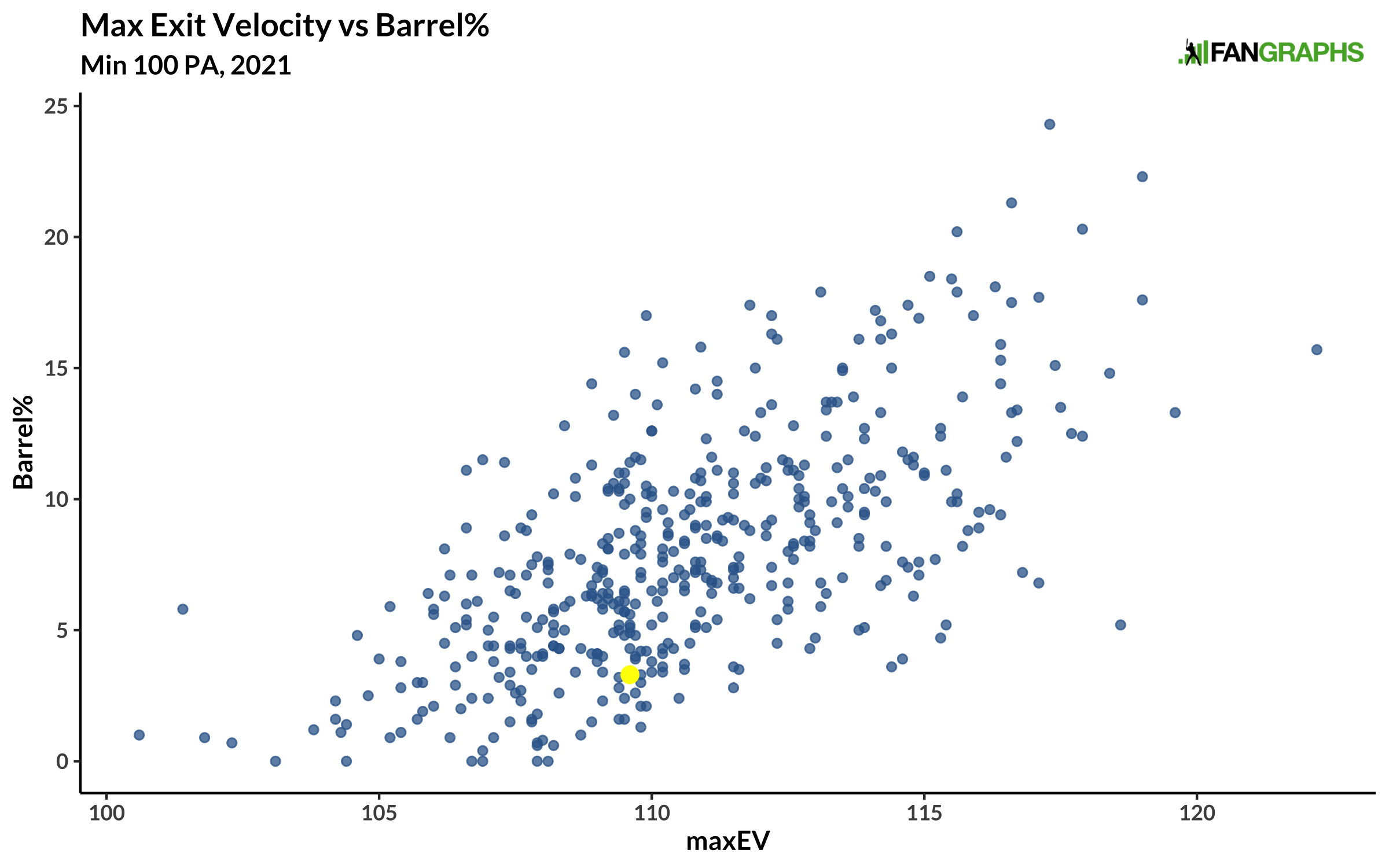The A’s are in the midst of another playoff hunt as they look to make their fourth postseason in a row, but this looks to be the first year in the run where a reliever doesn’t lead the pitching staff in WAR. Up there with Sean Manaea (2.9 WAR, 127 IP), Chris Bassitt (2.4 WAR, 137 IP) has taken a big step forward in his development, working a career best 19% K-BB%. Manaea’s success can be attributed to an across-the-board velocity spike (roughly 2 mph) that’s made an already great arsenal exceptional. Bassitt’s breakout is less clear and warrants some investigation.
Before I get into usage, I should note that his four-seam fastball velocity is a pedestrian 93.4 mph (league average is 93.7), and the shape on the four-seamer, sinker, and cutter are also average relative to the league.

For clarification on the sinker and cutter, vertical movement values greater than zero mean more drop than average. The four-seamer is rather poor when it comes to having the ride we associate with success in today’s game. The sinker, while it does well by horizontal movement, is still below average by vertical movement. And while the cutter shows great drop, there is a lack of cut or horizontal movement.
Despite being the only pitch with good vertical movement, though, it’s the cutter that has been lagging.
Chris Bassitt Fastball Results
| Pitch Type |
% Usage |
BA |
SLG |
SwStr% |
| Sinker |
38.1% |
0.256 |
0.390 |
5.3% |
| Four-seamer |
18.3% |
0.180 |
0.279 |
14.3% |
| Cutter |
17.9% |
0.360 |
0.587 |
9.2% |
I bring all this up because these are the pitches that Bassitt overwhelmingly relies upon, and it’s a unique combo.
Combined Fastball (FF, SI, FC) Usage Leaders
| Name |
Combined FB% |
| Lance Lynn |
92.5 |
| Tyler Anderson |
75.1 |
| Chris Bassitt |
73.4 |
| Yusei Kikuchi |
70.4 |
| Walker Buehler |
69.3 |
| Chris Flexen |
68.2 |
SOURCE: Baseball Savant
Among Qualified Starters
It’s an extreme approach, mashing together a combination of three average pitches by movement to the tune of a 3.51 FIP. There is no extension magic, but there is maybe some vertical approach angle ability at play.
There are far more robust calculations for vertical approach angle that are unavailable to me, but we can leverage some quick back of the envelope geometry to work with a loose version of our own. Just using release height, pitch height, and release extension, Bassitt is above average in keeping a flat approach angle that can paper over the lack of vertical movement. (“Above average” means that he does well to locate up in the zone but also releases from a lower height.)
Better than trying to justify my choice of simple geometry, how about I just show you where Bassitt stands by release and average location?

There’s great height on the four-seamer, but what’s arguably as important is how low Bassitt’s release is for a player of his height. One way to hack a non-rising four-seamer is to release it as low as possible but throw it high in the strike zone to recreate the same plane where a hitter feels like he has to adjust his hands to get his barrel where it needs to be. Bassitt does just this; he’s 6’5”, but his release is nearly a foot lower at 5.5 feet. There’s a flatness to the four-seamer that helps it play up in the zone, and the sinker still has enough raw movement to be effective as well.
Tunneling pitches and locating is great, but every pitcher wants to be more unpredictable to a hitter. Bassitt is in a high tier when it comes to combined fastball usage, but there’s a difference that should be noted on a per-plate appearance basis. What does that look like for the hitter? How often should someone step in against Bassitt and expect only fastballs?
Fastball Only PA Leaders
SOURCE: Baseball Savant
Min 250 Batters Faced
For a plate appearance against Bassitt, more often than not, a batter will have to expect an offspeed pitch at some point. The changeup, slider, and curve are featured less than 10% of the time, but the changeup is the only of those pitches that can be thrown with more regularity because it doesn’t have a huge velocity gap (15-plus mph) with the fastball like the curve and slider do. The curve is so loopy and slow it’s almost a kind of shock pitch to steal a strike, and while the slider is fine by movement, it may be too slow to throw with regularity to lefties.
What Bassitt does is overcome his inherent fastball movement, particularly the lack of rise that is so desired for four-seamers in today’s game. Not only that, but he’s also found a mix that allows him to throw what he can command well while still having enough in his arsenal to keep batters thinking about the offspeed coming their way. Performing as well as he is right now with this much fastball usage opens up the door for a more refined slider and/or cutter to take a larger role down the road.
Bassitt can follow Lynn as a roadmap, but with the cutter as poorly performing as it is and the slider platoon dependent, there’s room for him to grow. He has found great success not having to throw a slider more often or a better performing cutter, but there’s a possible next level if he felt the need to become more unpredictable. Despite somewhat below average raw stuff, he has excelled — and there are still steps he can take to get even better.









